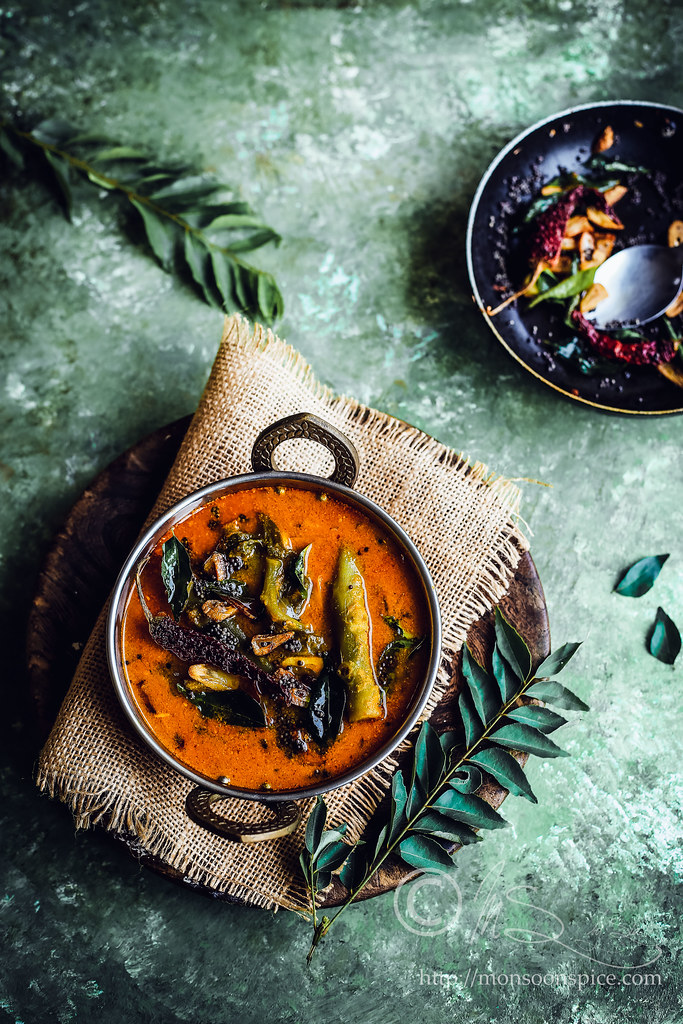
Learn how to make BasaLe Soppina Koddel ~ Udupi-Managlorean style Malabar spinach cooked in a freshly roasted spices and coconut gravy tempered with garlic
Do you dream about certain foods? After one long tired day, you close your eyes and then suddenly this delicious thing comes to your mind. All you can do at that moment is sigh and groan loudly matching the rumble of your stomach. You just wish that you could take one teeny-tiny bite of that scrumptious food you have had loooooooong time ago? Food that makes one want to weep as the nostalgia hits like a tonnes of bricks!

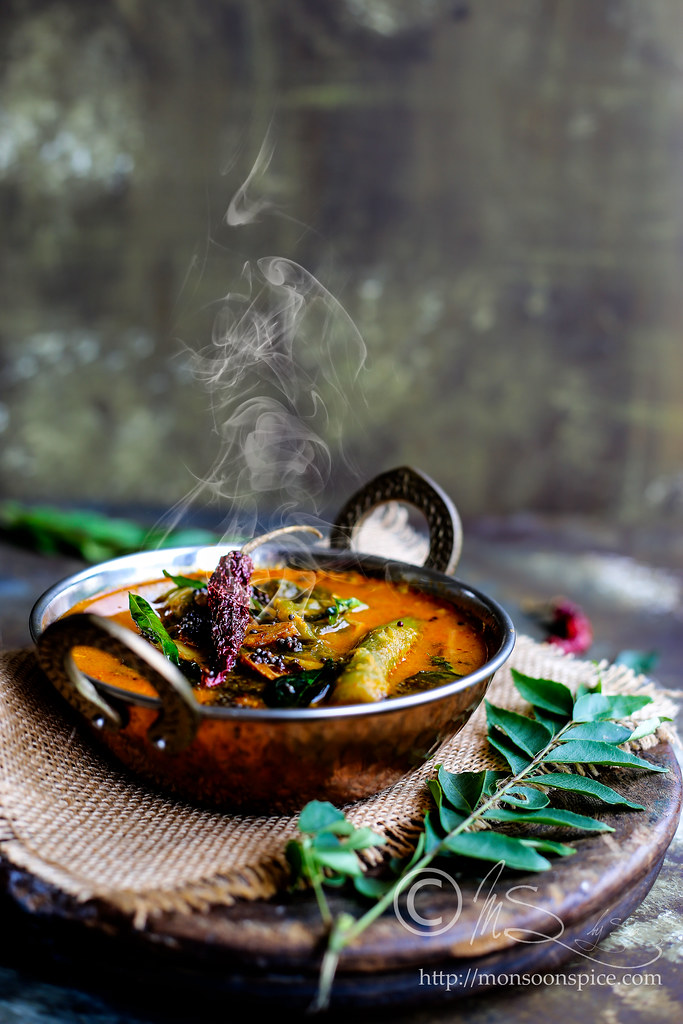
Yes… I am talking about such food, something you can’t find in a place where you are currently living. Apart from my family and friends, I miss quite many things that I had taken for granted in all those years I spent time in my country of birth. It is like inhaling the heady aroma of earth after first monsoon rain hits the mother earth, or the tingling taste of first tender mango rubbed with salt and chilli powder in hot summer days, or the feeling of happiness when you rest your head on your mother’s lap, or the satisfaction of hugging someone who loves you more than themselves, or the feeling of content that comes when you taste something specially cooked with lots of love by your loved ones… Yes, there are these few things that can’t be experienced anywhere else. And you miss them dearly, not just when you are feeling low but also when you are bursting with joy and happy thoughts. Because it is these few special people and interesting things that makes one’s life worthwhile.
There I go again… walk down the memory lane!!! Food makes me do all the crazy things and walking down the memory lane is the least bit of crazy things of all! While growing up, food became the major part of everyday life as it revolved around family, culture and, traditions. From simple everyday meal to exquisite and extraordinary celebratory meals, food was with us all the way. A kaleidoscope of images, people and colours flash in my mind as think of one such dish that is very close to my heart. It is called BasaLe Soppina Kodhel or Kodhilu or Koddel, a simple coconut based curry of Malabar spinach cooked in a freshly roasted spice paste and tempered with generous amount of garlic fried in coconut oil.


BasaLe (Bus-uh-lay) is a common green found in my native Udupi-Mangalore. This creeper has a very special place in our kitchens and is grown all through the year. The glossy green leaves have thick veins with stout stemmed creepers are grown in most backyards or in a large pot if there is shortage of space. As a child, it was not my favourite greens, but I loved using their red berries to paint my nails. But as I grew older and wiser (not), I couldn’t get enough of this greens whenever mom cooked
BasaLe Soppina Koddel. But my love for this
BasaLe Koddel hit the roof when I was pregnant with LD and I just wanted to savour this dish with freshly made
akki rotti by my amma. So much so that amma cooked it for me the very next day when she came here during last month of my pregnancy and I finished the entire pot of kodhel in a day all by myself! So when I finally got hold of these tender BasaLe or Malabar spinach or Poi from a new online Indian grocery store, I jumped up and down with joy and ordered two bunches to make these koddel straight away! The stalks/stems were tender ones without any chewy fibres, making it one of the best produce I have ever found outside India. Since then, I have been buying and making this delicious curry once in a fortnight and serving it with delicious crispy
akki rotti and
raagi rotti loaded with veggies.
Koddel or kodhel or kodhilu or koddellu in Tulu, a native/local language of Udupi-Mangalore, is quite similar to Sambar, a lentil based vegetable gravy from South India. While Sambar has both lentil and coconut, koddel normally uses just coconut in the gravy as it is abundant in this coastal region. It is lighter and milder compared to some fiery hot sambar, and uses locally grown vegetables and greens. There are three main ingredients in koddel; fresh coconut, tamarind and coconut oil that elevates this dish to whole new level of flavour quotient. The spices used in kodhel are either raw or roasted in a little coconut oil for couple of minutes before grinding them with freshly grated coconut.

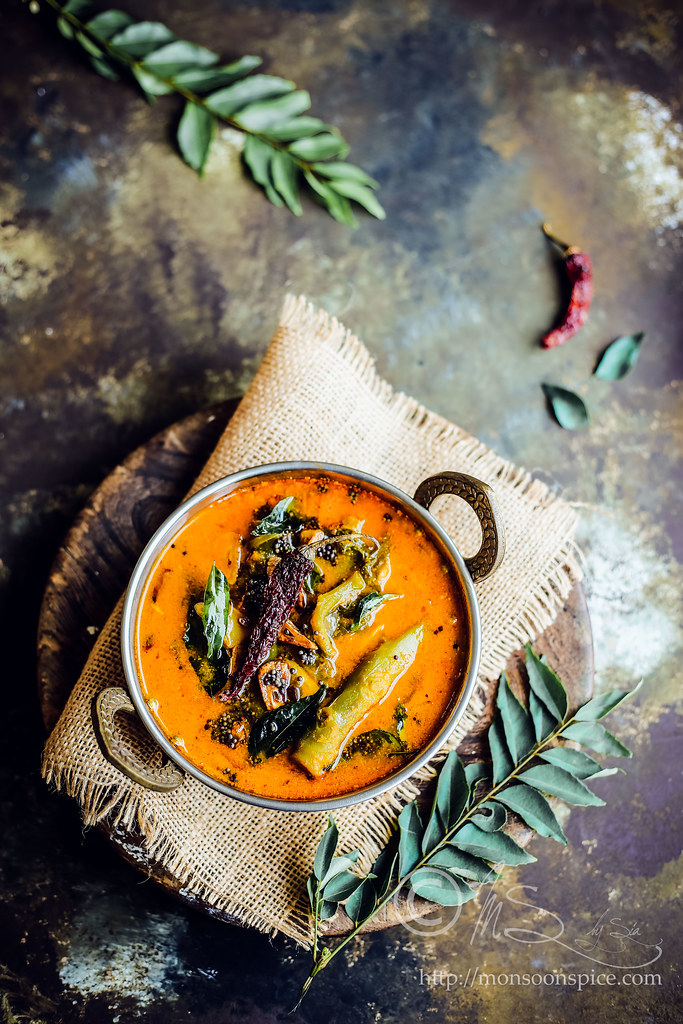
Unlike
other kodhel recipes, this recipe of
BasaLe Soppina Koddel from my Amma uses little bit of cooked toor dal in gravy as the cooked Malabar spinach leaves and stems releases its slimy juice and the dal adds body to the gravy. It works fantastically in this recipe but it’s entirely up to you if you want to use the dal or not as in traditional recipes it’s just a coconut is the base for the gravy. The colour the curry will depend on the type and number of chillies used in the recipe. It’s best to use some mild to medium hot dry red chillies like Kashmiri chillies, Byadagi chillies or Kumta chillies for beautiful bright colour and smoky flavour. These chillies have wrinkly skin as compared to the hot variety of smooth skinned chillies like Guntur chillies etc. Adjust the amount of dried red chillies as per taste. The age of the tamarind also defines the flavour of the curry. The old tamarind pulp is quite dark and black in shade and is sourer than the new tamarind pulp which is a shade of brown and is sweet flavoured. So taste a tamarind pulp and adjust the quantity as per taste. Finally, it’s the garlic tadka that simply elevates the dish and I recommend you to use them. Well, lot of them. Who doesn’t like the taste of nicely fried, crispy garlics in a curry? Right? Right!
With the gloomy and windy rains, it feels more like cold autumn days than beginning of summer season and this
BasaLe Soppina Koddel is perfect thing to cook and serve piping hot with some crispy
akki rotti or
ragi rotti or with just a bowl of rosematta (Kerala red rice) or white rice with a generous spoonful of desi ghee and a side of papad. It also goes well with some hot chapatti or
shavige (rice string hoppers). Did I tempt you enough? If yes, go make it right now. If not, you may be missing out something really tasty and fabulous. :) Don’t believe me? Why not give a try and test it yourself?!
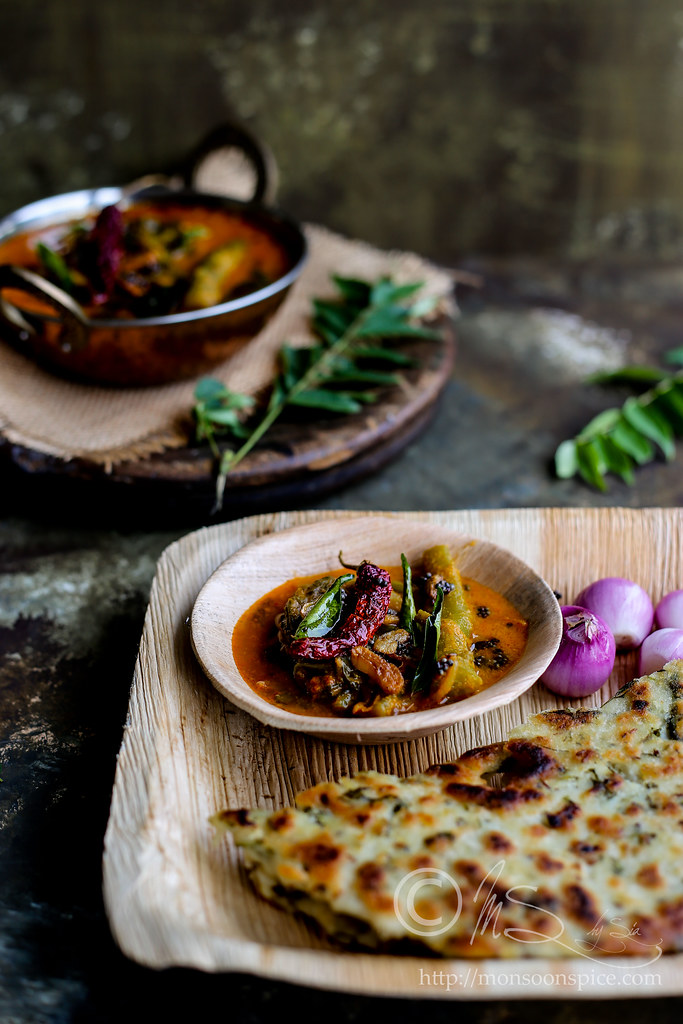
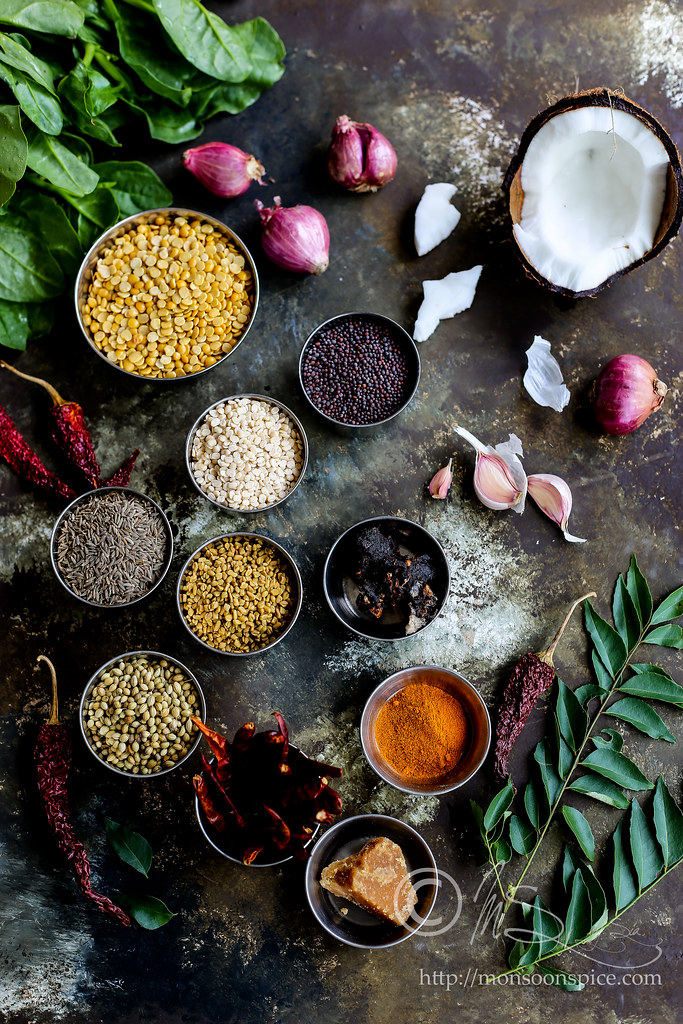
BasaLe Soppina Koddel (Udupi-Managlorean style Malabar spinach cooked in a freshly roasted spices and coconut gravy tempered with garlic)
Prep Time: 10-15 mins
Cooking Time: 20-25 mins
Recipe Level: Easy to Intermediate
Spice Level: Low to Medium
Recipe Source: My Amma
Shelf Life: Best served fresh but can be refrigerated for 2 days
Serving Suggestion: Serve with rosematta rice or plain white rice. You can also serve it with dosa, idli, chapatti,
ragi rotti or
akki rotti
Ingredients:
500 gms BasaLe/Malabar Spinach
1 medium Onion or 4-5 Sambar Onion/Shallots, peeled and thinly sliced
1 gooseberry size Tamarind Pulp
1 inch cube or ¾ tbsp. Jaggery (Adjust as per taste)
Salt to taste
For Coconut Paste:
1 cup grated Coconut, fresh or frozen
¼-½ cup cooked Toor Dal/Split Pigeon Peas
1 tbsp Dhania/Coriander Seeds
1 tsp Jeera/Cumin Seeds
½ tbsp. Urad Dal/Split Blackgram
½ tsp Methi/Fenugreek Seeds
5-6 Dried Red Chilli (Use Kashmiri or Byadagi or KumTa chillies. Adjust as per taste)
1 small gooseberry sized Tamarind Pulp
¼ tbsp. Oil (Preferably coconut oil)
For Tadka/Tempering:
1 tsp Mustard Seeds
2 Dried Red Chillies, cut into 2-3 pieces
¼ tsp Hing/Asafoetida
1 medium bulb of Garlic, peeled and sliced
1 tbsp Oil (Preferably coconut oil)
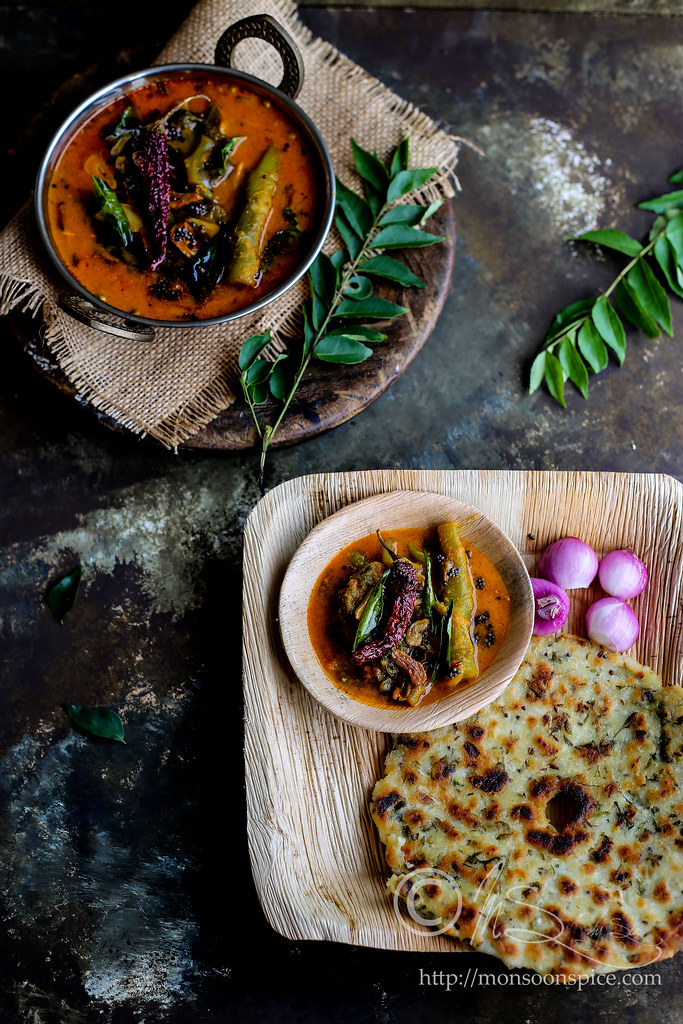
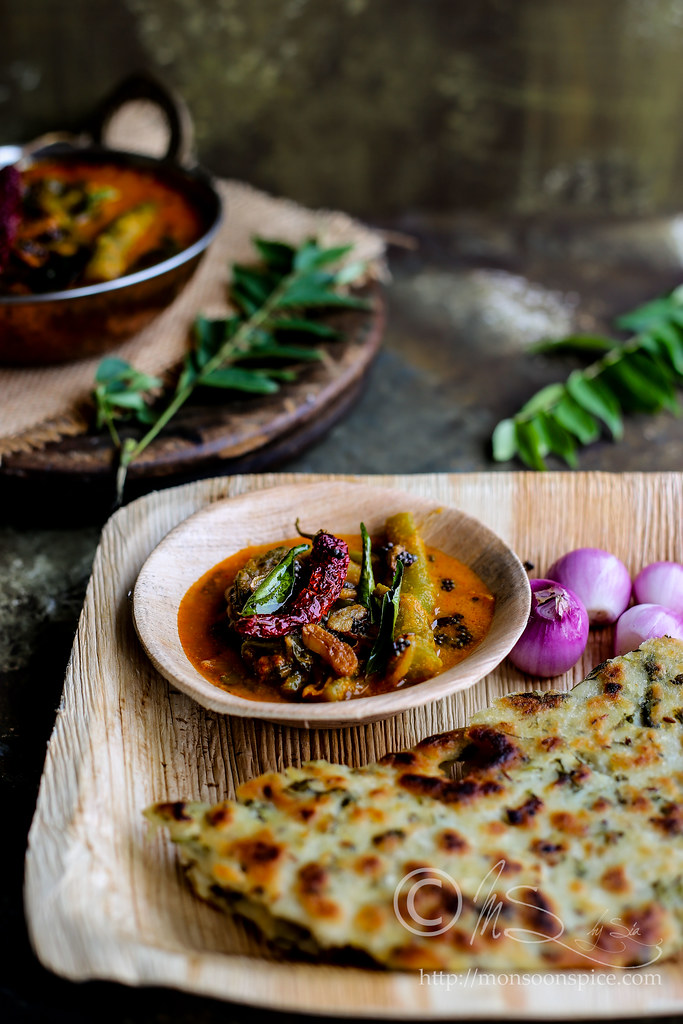 Method:
Preparation:
Method:
Preparation:
- Wash the Malabar spinach thoroughly and separate the leaves from stalks. Cut the stalks into 3-inch-long pieces and place them in a pan or pressure cooker along with the leaves. To this, add turmeric powder, jaggery, tamarind pulp, salt to taste and about 3 cups of water. Close the lid and pressure cook on medium flame for 2 whistles. If using a pan instead of pressure cooker, first cook the stalks for 5-8 mins and then add the leaves and cook for about 10-15 minutes if cooking in a pan. Wait for the pressure to release completely before opening the lid.
- While the Malabar spinach is cooking, prepare the coconut masala for the curry. Heat ¼ tbsp. of coconut oil in a pan and add urad dal, coriander seeds, cumin seeds, fenugreek seeds and dry red chillies. Roast them on low heat for about 2 minutes until the spices are roasted and the urad dal turns golden brown.
- Transfer the roasted spices to a mixer grinder and add grated fresh coconut and tamarind pulp. Add about ½ - ¾ cup of water and grind them to smooth paste. Add cooked toor dal and run the grinder to smooth paste. Keep it aside until needed.
- Peel and slice the sambar onions/shallots thinly and keep them aside.
- Peel the garlic pods and cut them into slices and keep them aside until needed.
Proceed to cook:
- Place the pan or pressure cooker pan with cooked Malabar spinach back into the hob and turn the heat to medium. Add about ½-1 cup of water and let it come to a gentle boil.
- Add the ground coconut paste and mix them all well. Mix in some more water to get the desired consistency. Remember that the urad dal and the toor dal in coconut paste will add body to the gravy and will thicken as it cools. Adjust the salt/seasonings and mix them all well. Reduce the flame to let it simmer for 10-12 minutes.
- While the gravy is simmering, prepare the tadka. Heat about 1 tbsp of oil in tadka pan. When hot, add garlic pieces and fry them until they turn golden brown. Add mustard seeds, dry red chillies, hing and curry leaves. When the mustard seeds start to pop and splutter, add thinly sliced shallots/pearl onions and fry them until they turn golden brown.
- Transfer the tadka to kodhel and mix them all well. Let it simmer for 2-3 minutes before turning off the flame.
- Cover the pan and let the curry rest for 20-30 minutes for the flavours to blend well. Heat the BasaLe Soppina Kodhel before serving hot with rice, chapatti, ragi rotti or akki rotti. Enjoy!
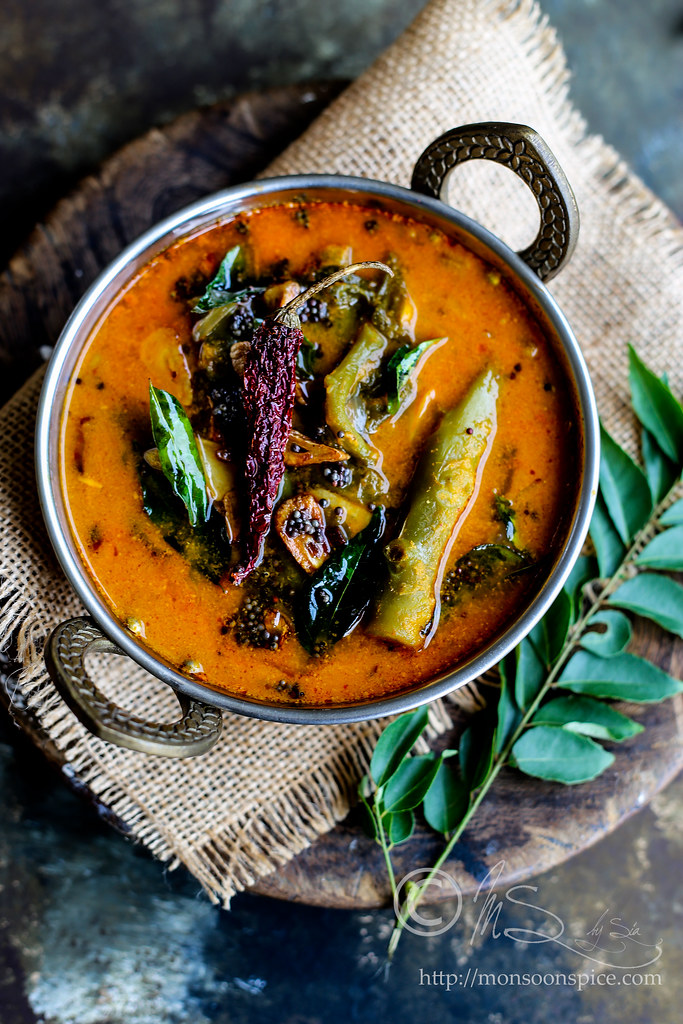
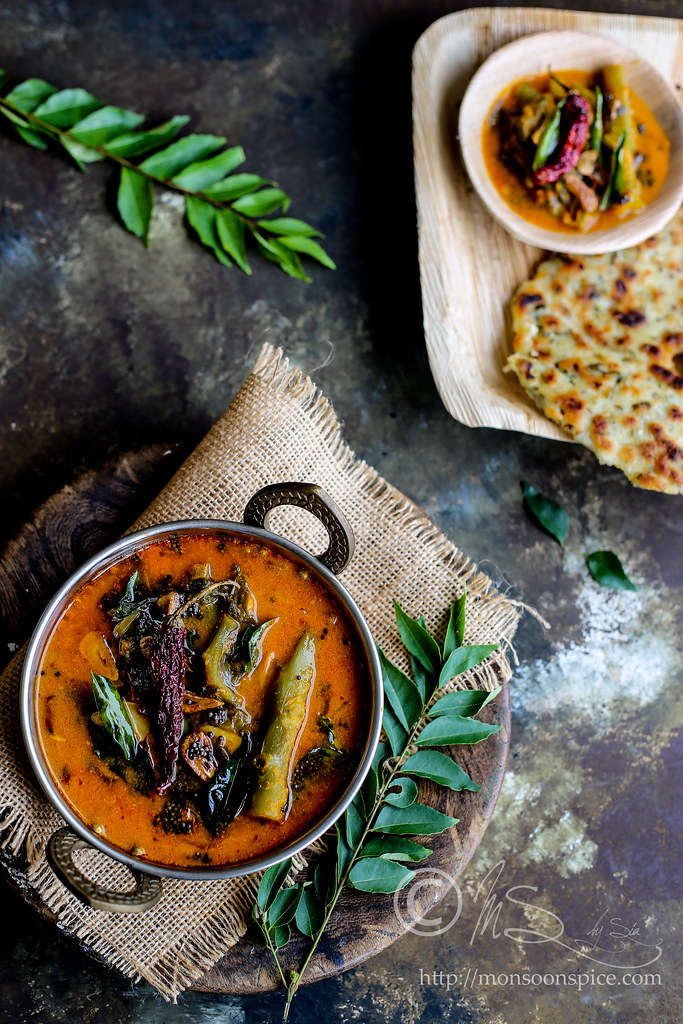
Sia’s Notes:
- The best way to cook the Malabar spinach is in a pressure cooker. But if you are using a pan, first cook the stalks for 5-8 minutes depending and then add the leaves and cook for 10-12 mins covered with lid on medium flame.
- Although we don’t add cooked toor dal in kodhel, this one is an exception. You can just leave out the toor dal and just use the coconut masala, but I do recommend using it.
- The colour the curry will depend on the type and number of chillies used in the recipe. It’s best to use some mild to medium hot dry red chillies like Kashmiri chillies, Byadagi chillies or Kumte chillies for beautiful bright colour and smoky flavour. These chillies have wrinkly skin as compared to the hot variety of smooth skinned chillies like Guntur chillies etc. Adjust the amount of dried red chillies as per taste.
- The age of the tamarind also defines the flavour of the curry. The old tamarind pulp is quite dark and black in shade and is sourer than the new tamarind pulp which is a shade of brown and is sweet flavoured. So taste a tamarind pulp and adjust the quantity as per taste.
- Do not use desiccated coconut in this recipe. It’s best to use freshly grated coconut and if not, use the thawed frozen coconut.
- Also, it’s best to use coconut oil in this recipe as it adds a lot of flavour to the curry.
- The tamarind is a very important ingredient in this recipe as the Malabar spinach can be little slimy when cooked and the tamarind packs a punch of flavour. Adjust the amount of tamarind and jaggery as per taste.














I do crave certain foods and I guess it is normal especially when you move to a new country that has a totally different cuisine from yours! :) But it's hard sometimes! I have no idea what most of the ingredients in your recipe are but I like the sound of them and more importantly I like the finished "product"! I am sure I would love it!
ReplyDeleteThanks, Julie!
DeleteRegional cuisines of India is vast and much different from the typical spicy curries and tikka masalas sold in restaurants and takeaways :) And they are much lighter, milder and healthier as well. Every region has it's own recipes with ingredients which are locally produced and it's difficult to source outside that particular region. Thanks to globalisation, the world is becoming smaller and we are able to get them in local groceries which otherwise would have been impossible to get few years ago :)
Your photography is amazing! I just want to reach in and take a bite of this unusual and beautiful dish. As I was reading the ingredient list, I realize I'm just going to have to visit your part of the world to try it -- I don't know where I would find Split Blackgram and Asafoetida.
ReplyDeleteThanks a lot, Lisa! :)
DeleteIt's true that it's little difficult to source veggies and greens like Malabar spinach in this recipe. But most of the ingredients for Indian cooking are easily available in any Indian grocery stores or online.
YES, I totally dream about food haha! I thought it was just me! I'll wake up and be like "Ooooh I need to write that down!" this looks phenomenal! So many amazing flavours all in one place, this would really hit the spot!
ReplyDeleteThanks, Annie and LOL... It's good to know that I am not alone :)
DeleteThis sounds amazing! Love all those spices and I can just imagine how fragrant it smells!
ReplyDeleteThanks, Lisa :) It is indeed quite flavourful and fragrant curry.
DeleteLove your photos, this dish looks amazing and great flavours
ReplyDeleteThank you, Mellissa!
DeleteThis is my favorite dish to go along with rice or just as is ,have had it with neer dosa but never thought of pairing it with akki rotti :) now that I think about it it seems delicious. Your pictures are beautiful as always !!
ReplyDeleteThanks, Shilpa :)
DeleteOh, yes! Neer dosa with basaLe koddel. I love that combination too. But yes, it really goes well with akki rotti. Do give it a try next time.
Search a hearty dish Sia. I love any kind of greens with lentils. Beautiful photography!
ReplyDeleteThank you, Kankana. You can't go wrong with greens with lentils and they are so comforting.
DeleteI have heard that Malabar spinach is widely used in Bengali cuisine as well. Do you have any recipes on your blog?
Ur pics r really superb n the dish really looks very amazing....my ajji prepares this with moong n tht also tastes very nic😁😊
ReplyDelete